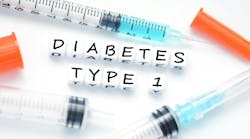What makes a patient “critically ill”? The term gets used often, but it can be difficult to define.
Certainly, being in an intensive care unit (ICU) should satisfy this, but, paradoxically, not every patient in the ICU is critically ill, and patients outside of the ICU setting have the potential to be considered critically ill. Very sick patients are often not in intensive care units, but throughout the hospital: emergency departments, post-anesthesia care units, operating rooms, and labor and delivery. These patients require specialized, timely, and individualized care to achieve the best outcomes. To say that only patients residing in the ICU require this stepped-up level of care is to potentially underestimate their disease severity and overlook factors which may adversely affect outcomes. One such factor is glycemic control.
Although controlling blood sugar is an obvious necessity for diabetic patients, glycemic control is a component of care in most, if not all, critically ill patients as dysglycemia is prevalent in these patients. There is now quite a bit of data that shows improved outcomes with insulin therapy in critically ill patients.1-3 Although there is debate about how “tight” this control should be, there is consensus that it is beneficial.4-6
There is also observational evidence that dysglycemia is actually the primary cause of poor outcomes rather than merely a marker for more severe disease.5 Glucose control is also being increasingly recognized as a prognostic factor in COVID-19 patients. Preexisting diabetes increases morbidity and mortality in COVID-19 patients, and well controlled blood glucose in this population is associated with improved outcomes.7 Importantly, in non-diabetic patients with COVID-19, those with uncontrolled hyperglycemia had a mortality rate of over 40%.8
Point-of-care measurement of blood glucose
The cornerstone of proper glycemic control is accurate and timely measurement of blood glucose. Point-of-care testing (POCT) appears to be an obvious answer for accomplishing this, but it is not as simple as it appears. Many POC blood glucose monitoring systems (BGMS) simply are not accurate enough in this patient population to be trusted.9,10 In fact, only one BGMS has been approved by the U.S. Food and Drug Administration (FDA) for use in critically ill patients.11
A significant factor accounting for poor performance in some BGMS is from interfering agents. These can be endogenous (anemia, hypotension), or exogenous such as medications. Commonly used drugs such as acetaminophen, dopamine, acetylcysteine, icodextrin, and ascorbic acid are known to cause falsely elevated glucose readings in many meters. Anemia is present in over 70% of ICU patients and typically worsens the longer a patient is in the hospital.12 Anemia is a common cause of factitious hyperglycemia with certain BGMS,13 although some meters do correct for this.
In addition, high dose ascorbic acid (vitamin C) is increasingly being used to treat patients with a variety of conditions, including sepsis, burns, cancer, and COVID-19, to name a few.14-17 A recent search on clinicaltrials.gov shows over 100 active or recently completed studies using high dose ascorbic acid. Ascorbic acid is notorious for causing pseudohyperglycemia, which could lead to overdosing of insulin;18 in fact, it has led to death in this exact scenario.19
For this reason, two currently active trials looking at vitamin C in critically ill patients recommend using a BGMS validated for use in patients on ascorbic acid.15,17 One such trial, the LOVIT study (which looks at vitamin C to lessen organ dysfunction) states in its protocol that “blood glucose can only be measured by one of the following three methods: hospital core laboratory instruments; a point-of-care arterial blood gas machine whose glucose measurement has been validated in the setting of high blood concentration of ascorbic acid; and a point-of-care glucometer with measurements that have been shown to be accurate in the presence of high blood concentration of ascorbic acid. 15
Adverse outcomes from erroneous measurements of glucose
Erroneously elevated glucose, regardless of the cause, can lead to overtreatment with insulin, resulting in hypoglycemia and poor outcomes. In addition to the death described above, there are now numerous case reports of significant and permanent neurologic damage due to inappropriate insulin administration in the setting of other interfering agents.19,20,21 So, this is not just a theoretical concern.
An Italian point-of-care study group recently issued a recommendation not to use BGMS in critical care settings unless the meter is certified for use in critically ill patients.22 Clinicians caring for these patients, therefore, face a difficult situation: send all glucose specimens to the central lab, with its inherent drawbacks (delay in results, preanalytical errors, etc.), or use a BGMS off-label, but this may give inaccurate results and potentially result in medicolegal consequences if an adverse event occurs.23
In one large study done in five ICUs in three countries, involving nearly 1,700 patients, glucose results from a BGMS were compared to the hospital’s central laboratory analyzer.24 When plotted on a Parkes Error Grid, 99.3% of results were in Zone A, which means there was no clinical significance between the results from the BGMS and the central lab. The remaining results were in Zone B, representing minimal clinical significance. In a similar graphic looking at insulin dosing error (Figure 1), there was minimal clinical significance in insulin dosing based on the BGMS results.25 In addition, the performance of the BGMS met the most current standard for glucose measurement as defined by CLSI POCT12-A3 [27] with 95.4% of results <100mg/dL and 96.5% of the results >100 mg/dL falling within 12 mg/dL of the core lab. No significant interferences were identified in any patient, with patients on over 8,000 various compounds for treatment.
Given the complexity of glucose testing, it is, therefore, imperative for clinicians and laboratorians to be aware of the limitations of any BGMS that is being used in settings where critically ill patients are cared for. In a high-risk environment, where accuracy and reliability can directly impact patient outcomes, not all BGMS devices are created equally.
References
- Van den Berghe G, et al., Intensive Insulin Therapy in the Medical ICU. N England J Med. 2006. 354(5): p. 449-461. doi: 10.1056/NEJMoa052521.
- van den Berg, G, et al., Intensive Insulin Therapy in Critically Ill Patients. N England J of Med. 2001. 345(19): p. 1359-1367. doi: 10.1056/NEJMoa011300.
- Wiener RS, Wiener D, Larson R. Benefits and risks of tight glucose control in critically ill adults. A meta-analysis. JAMA, 2008. 300(8): p. 933-936. doi: 10.1001/jama.300.8.933.
- Chase JG, et al., Improving glycemic control in critically ill patients: personalized care to mimic the endocrine pancreas. Critical Care. 2018. 22(1): p. 182. doi: 10.1186/s13054-018-2110-1.
- Uyttendaele V, et al. Untangling glycaemia and mortality in critical care. Critical Care, 2017. 21(1): p. 152. doi: 10.1186/s13054-017-1725-y.
- Hsu CW. Glycemic control in critically ill patients. World J Crit Care Med, 2012. 1(1): p. 31-9. doi: 10.5492/wjccm.v1.i1.31.
- Zhu L. et al. Association of Blood Glucose Control and Outcomes in Patients with COVID-19 and Pre-existing Type 2 Diabetes. Cell Metab. 2020. 31(6): p. 1068-1077.e3. doi: 10.1016/j.cmet.2020.04.021.
- Bode B, et al. Glycemic Characteristics and Clinical Outcomes of COVID-19 Patients Hospitalized in the United States. J Diabetes Sci Technol. 2020. 14(4): p. 813-821. doi: 10.1177/1932296820924469.
- Karon BS, et al. Retrospective evaluation of the accuracy of Roche AccuChek Inform and Nova StatStrip glucose meters when used on critically ill patients. Diabetes Technol Ther. 2014. 16(11): p. 1-5. doi: 10.1089/dia.2014.0074.
- Denfeld QE, et al. Precision and accuracy: Comparison of point-of-care and laboratory glucose concentrations in cardiothoracic surgery patients. J Cardiovasc Nurs. 2011. doi: 10.1097/JCN.0b013e31820a7bf4. doi: 10.1097/JCN.0b013e31820a7bf4.
- Rice, M, Smith J, Coursin D. Glucose measurement in the ICU: Regulatory intersects reality [Editorial]. Crit Care Med. 2017. 45(4): p. 741- 743. doi: 10.1097/CCM.0000000000002274.
- Thavendiranathan P, et al. Do blood tests cause anemia in hospitalized patients? The effect of diagnostic phlebotomy on hemoglobin and hematocrit levels. J Gen Intern Med. 2005. 20(6): p. 520-4. doi: 10.1111/j.1525-1497.2005.0094.x.
- Mann EA, et al. Hematocrit effect outweighs other sources of glucometer error in critical care. Crit Care Med. 2007. 35(12): A140.
- Li J. Evidence is stronger than you think: a meta-analysis of vitamin C use in patients with sepsis. Crit Care. 2018. 22(1): p. 258. doi: 10.1186/s13054-018-2191-x.
- Masse MH, et al. Lessening Organ dysfunction with VITamin C (LOVIT): protocol for a randomized controlled trial. Trials. 2020. 21(1): p. 42. doi: 10.1186/s13063-019-3834-1.
- Hemilä H, Chalker E. Vitamin C may reduce the duration of mechanical ventilation in critically ill patients: a meta-regression analysis. J Intensive Care. 2020. 8: p. 15. doi: 10.1186/s40560-020-0432-y.
- Hager DN, et al. The Vitamin C, Thiamine and Steroids in Sepsis (VICTAS) Protocol: a prospective, multi-center, double-blind, adaptive sample size, randomized, placebo-controlled, clinical trial. Trials. 2019. 20(1): p. 197. doi: 10.1186/s13063-019-3254-2.
- Zhang Y, Huang W. Never a rose without a prick: pseudohyperglycemia when administering high-dose intravenous vitamin C. Crit Care. 2020. 24(1): p. 251. doi: 10.1186/s13054-020-02994-4.
- U.S. Food and Drug Administration. MAUDE Adverse Event Report. Roche Diagnostics accu-chek inform ii test strips blood glucose monitoring test strips. 2017. 1823260-2017-01598.
- Disque AA, Dhillon, Gritsch A. Icodextrin causing glucose meter error and severe hypoglycemia after deceased donor renal transplant in a patient receiving continuous ambulatory peritoneal dialysis. A A Case Rep. 2013. 1(6): p. 89-91. doi: 10.1097/ACC.0b013e3182a4e51f.
- Jadhav P, Jadhav, MP. Fallaciously elevated glucose level by handheld glucometer in a patient with chronic kidney disease and hypoglycemic encephalopathy. International Journal of Case Reports and Images. 2013. 4(9): 485-488.
- Rampoldi, E., et al., Principi per l’implementazione e la gestione del point-of-care-testing (POCT): indicazioni essenziali. Biochimica clinica. 2021. 45(3): 312-326.
- DuBois JA, Mali A. “Off-label” use of blood glucose monitoring systems in critically ill patients. Medical Laboratory Observer. 2017. 49(7): p. 67-69. https://www.mlo-online.com/home/article/13009092/offlabel-use-of-blood-glucose-monitoring-systems-in-critically-ill-patients.
- DuBois JA, et al., Bedside Glucose Monitoring-Is it Safe? A New, Regulatory-Compliant Risk Assessment Evaluation Protocol in Critically Ill Patient Care Settings. Crit Care Med. 2017. 45(4): p. 567-574. doi: 10.1097/CCM.0000000000002252.
- Lyon ME, et al., An insulin-dose error assessment grid: A new tool to evaluate glucose meter performance. Clin Biochem. 2019. doi: 10.1016/j.clinbiochem.2019.06.001.
- CLSI, POCT12A3E Point-of-Care Blood Glucose Testing in Acute and Chronic Care Facilities; Approved Guideline—Third Edition. 2013.
Dennis Begos, MD, is Medical Director at Nova Biomedical. Begos is a board-certified physician and surgeon with over 20 years’ experience in clinical medicine, medical education, and administration.
![Figure 1: Insulin Dose Error Assessment Grid showing minimal deviation between the BGMS and central laboratory analyzer. Red represents over-administration of insulin, blue represents under-administration, based on the BGMS result[26]. Figure 1: Insulin Dose Error Assessment Grid showing minimal deviation between the BGMS and central laboratory analyzer. Red represents over-administration of insulin, blue represents under-administration, based on the BGMS result[26].](https://img.mlo-online.com/files/base/ebm/mlo/image/2022/03/Picture1.62347c3c6f922.png?auto=format,compress&fit=max&q=45&w=250&width=250)




